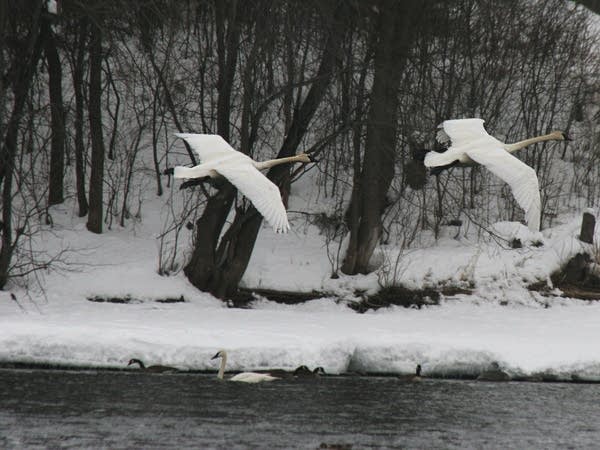Audubon report finds climate change 'spells trouble' for North American birds

A new report suggests Minnesotans might need to consider a future without iconic birds, including the state bird, the common loon, along with the American white pelican, the trumpeter swan and even the mallard duck.
The six-year Audubon Society study of more than 500 North American bird species looks at how changing temperatures, extreme weather, rising sea levels and other effects of climate change will be pushing birds and their ranges around between now and the end of the century.
From The Associated Press:

Create a More Connected Minnesota
MPR News is your trusted resource for the news you need. With your support, MPR News brings accessible, courageous journalism and authentic conversation to everyone - free of paywalls and barriers. Your gift makes a difference.
"This will spell trouble for most birds," said Gary Langham, the society's chief scientist and vice president.
Over the next six decades or so, the critical ranges of more than half the 588 North American bird species will either shrink significantly or move into uncharted territory for the animal, according to Langham's analysis.
While other studies have made similar pronouncements, this report gives the most comprehensive projections of what is likely to happen to America's birds.
The report says that in a few decades, 126 bird species will end up with a much smaller area to live in, which the society says will make them endangered. An additional 188 species will lose more than half their natural range but relocate to new areas. Those moves will be threatening to the birds' survival, too, because they will be confronted with different food and soil, bird experts said.
Other birds, including backyard regulars like the American robin and the blue jay, will fly in even more places, the report says. And some of the biggest potential winners aren't exactly birds that people like — species such as the turkey vulture, the American crow and the mourning dove, which will expand their ranges tremendously.
The AP story goes on to say that the report is not yet peer-reviewed, and reports that some academics are characterizing the report as too general.
Matt Anderson, executive director of Audubon Minnesota, tells The Daily Circuit that the loon is among the birds facing a predicament — and that should be a wake-up call for Minnesotans.
"We've all known for a long time that climate change is a serious threat, but I think this puts it in a way that makes it personal for us, and I think in a lot of ways what that does is inspires us to get moving," he said.
Anderson told the Daily Circuit there are 315 bird species known to spend part of their year in Minnesota; the data from the report tracked 297 of those species. Of the 297, more than half — 166 — were found to be what Audubon terms "climate endangered" or "climate threatened," meaning they are likely to lose at least 50 percent of their habitable range by 2050 because of climate change.
For climate-threatened birds, the 50-percent loss has the potential to be offset by gains in new geographic areas of range. Climate-endangered birds have no such potential, according to Anderson.

The report suggests the American white pelican could lose almost 80 percent of its range. The trumpeter swan — which was reintroduced to Minnesota after a previous disappearance — could lose more than 90 percent of its range. And even the mallard — the "robin of wetlands," as Anderson calls it — could see a loss of almost 60 percent of its range.
"In some ways, the mallard makes a great flagship, in that you always see them, all over," Anderson added. "That's part of the wake-up call. Global warming isn't just going to affect those rare and endangered birds already on the precipice. This is a common bird. And that should be a wake-up call."